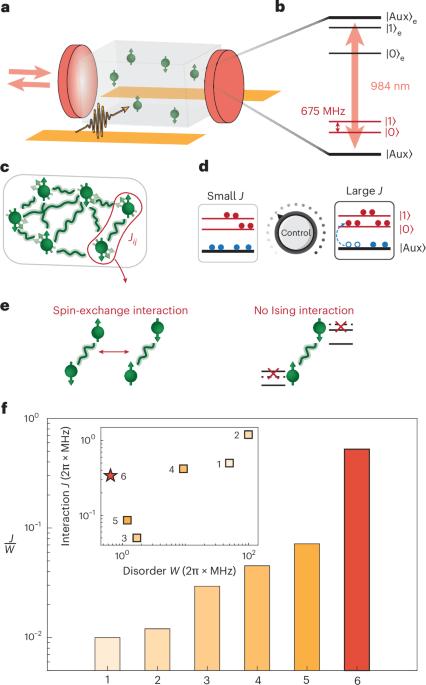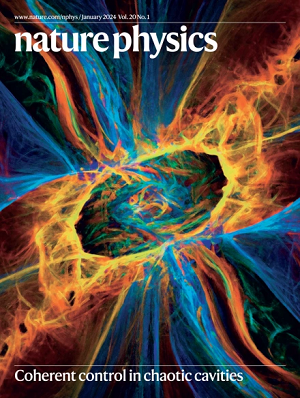Quantum thermalization and Floquet engineering in a spin ensemble with a clock transition
IF 18.4
1区 物理与天体物理
Q1 PHYSICS, MULTIDISCIPLINARY
引用次数: 0
Abstract
Platforms that enable the study and control of quantum many-body interactions are fundamentally important in quantum science and related emerging technologies. Optically addressable solid-state spins offer scalability to a large Hilbert space but suffer from large on-site disorder and undesired couplings to the environment. Here we investigated a strongly interacting ensemble of millions of optically addressable ytterbium-171 ions in a crystal. This platform features a clock transition that is first-order insensitive to magnetic fluctuations, thus exhibiting superior coherence and small disorder. Notably, the clock transition also gives rise to pure spin-exchange interactions, realizing the dipolar XY model, which is difficult to access in other solid-state spin systems. We exploited this feature to investigate quantum thermalization by varying the relative ratio of interaction strength to disorder, dynamically engineering the XY model into other many-body Hamiltonian models and realizing a time-crystalline phase of matter through periodic driving. Our results demonstrated that an ensemble of rare earth ions serves as a versatile test bed for many-body physics and developing quantum technologies. Using Floquet engineering, an ensemble of ytterbium-171 ions in an yttrium orthovanadate host crystal provides a platform for studying the dynamics of different quantum many-body models, including the realization of a time-crystalline phase.


具有时钟跃迁的自旋系综中的量子热化和Floquet工程
能够研究和控制量子多体相互作用的平台在量子科学和相关新兴技术中至关重要。光寻址固态自旋提供了对大希尔伯特空间的可扩展性,但存在较大的现场无序和与环境的不期望耦合。在这里,我们研究了晶体中数百万个光学寻址的171型镱离子的强相互作用系综。该平台具有一阶对磁波动不敏感的时钟跃迁,因此具有优越的相干性和小的无序性。值得注意的是,时钟跃迁还产生了纯自旋交换相互作用,实现了在其他固态自旋系统中难以获得的偶极XY模型。我们利用这一特征,通过改变相互作用强度与无序度的相对比,动态地将XY模型工程到其他多体哈密顿模型中,并通过周期性驱动实现物质的时间晶体相,来研究量子热化。我们的研究结果表明,稀土离子的集合可以作为多体物理和发展量子技术的通用测试平台。
本文章由计算机程序翻译,如有差异,请以英文原文为准。
求助全文
约1分钟内获得全文
求助全文
来源期刊

Nature Physics
物理-物理:综合
CiteScore
30.40
自引率
2.00%
发文量
349
审稿时长
4-8 weeks
期刊介绍:
Nature Physics is dedicated to publishing top-tier original research in physics with a fair and rigorous review process. It provides high visibility and access to a broad readership, maintaining high standards in copy editing and production, ensuring rapid publication, and maintaining independence from academic societies and other vested interests.
The journal presents two main research paper formats: Letters and Articles. Alongside primary research, Nature Physics serves as a central source for valuable information within the physics community through Review Articles, News & Views, Research Highlights covering crucial developments across the physics literature, Commentaries, Book Reviews, and Correspondence.
 求助内容:
求助内容: 应助结果提醒方式:
应助结果提醒方式:


